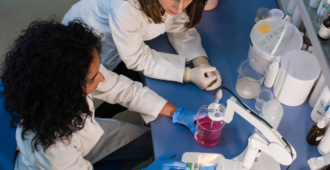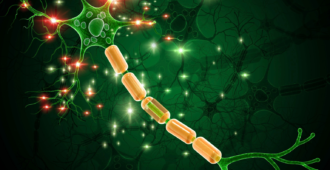
Dr Robin Highley from the Sheffield Institute of Translational Neuroscience (SITraN), which is based at the University of Sheffield, has written a special ‘guest blog’ about his research and the value of tissue donation.
I am a pathologist who recently completed a MND Association/Medical Research Council Lady Edith Wolfson fellowship. During my research fellowship, a student and I spent many months using lasers to dissect out motor neurones from spinal cord, kindly donated by people who had died from motor neurone disease (MND).
We extracted RNA (a sort of molecular message that conveys instructions from the genes in the DNA to the machinery that makes protein) and analysed this using exon arrays (find out more about genes, DNA and RNA here). Exon arrays measure nearly every part of the activity of every gene known in the human genome (the entire DNA of an individual). So, whilst picking the cells is a lot of work, the exon arrays can really let you know what is going on in a cell and the data is a truly valuable resource.
We concluded that a key issue in MND was the processing of RNA, which we published a few months ago. We also uploaded the entire data from the research onto a publicly available website, making it freely available to scientists anywhere in the world.
Sharing data
A few weeks ago I saw a really interesting study by a group of Japanese scientists (Satoh et al. 2014). They used the data we had made publicly available and combined it with data from other studies to look at a form of inherited MND caused by mutations in the C9ORF72 gene. For more information about the rare inherited form of MND click here.
Like us, they concluded that RNA processing was a crucial problem in MND. Our data was sponsored by the MND Association, and generated from individuals who had so generously donated their tissues to scientific research after their death. It was great to see our data being used on the other side of the world (within a matter of weeks of it being published), highlighting the importance of open-access and sharing data with the rest of the MND research community. It was also reassuring to see other workers in the field coming to similar conclusions to us after using different methods of data analysis.
So, I would like to take this opportunity to thank the MND Association and its supporters, as well as those people who agree to donating their tissues to autopsy studies on MND. The research these donations generate is a valuable legacy.






Great work. This is an interesting read. I’m waiting anxiously for a breakthrough – my son has been diagnosed with MND.
I am assuming that like me you have by now lost your beloved son. My heart goes out to you. There seems to me to be little progress regarding a treatment. Just to let you know that you’re not alone.